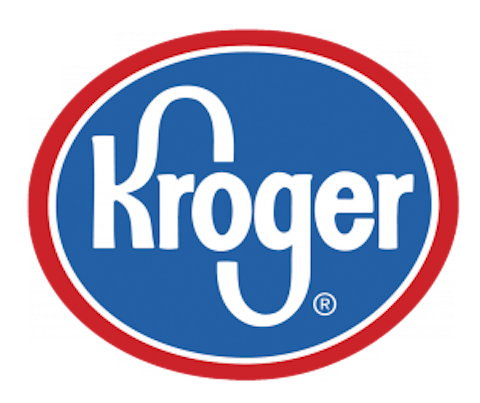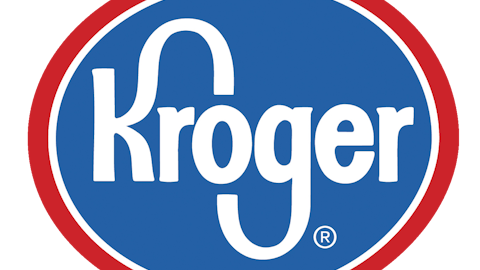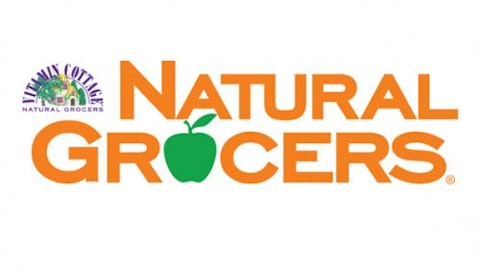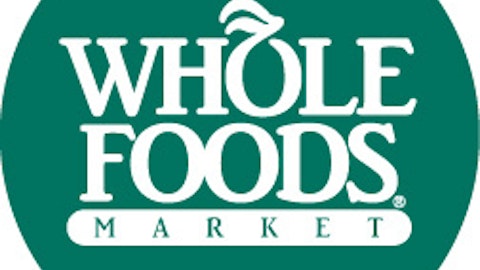If you’re looking for an exciting investment, then it’s not likely that you’re going to look at The Kroger Co. (NYSE:KR). After all, the company has been around since 1883. If you’re not familiar with Kroger, then this might conjure up images of horse-drawn carriages, men wearing top hats, women in full skirts, and dust balls. However, Kroger has managed to change with the times incredibly well.

For example, The Kroger Co. (NYSE:KR) continues to increase market share annually despite increased competition from unique-concept stores such as Whole Foods Market, Inc. (NASDAQ:WFM).
The Kroger Co. (NYSE:KR) only increased its market share 0.2% in 2012, but any market share improvement is a positive as it’s better than the alternative. Let’s take a look at some other reasons why Kroger might offer a solid investment going forward.
Aggressive management
In a time where competition is fiercer than ever and the consumer is weak, The Kroger Co. (NYSE:KR) doesn’t back down. If anything, this company seems to use these challenges as motivation. Kroger is consistently expanding its store base, which has helped increase market share. Days ago, it purchased Harris Teeter Supermarkets Inc (NYSE:HTSI) for $2.5 billion, which broadens Kroger’s exposure in Mid-Atlantic and Southern states.
An important aspect of this acquisition is that Harris Teeter Supermarkets Inc (NYSE:HTSI) is an upscale brand that can be found in affluent areas. High-income consumers haven’t suffered from the economic slowdown nearly as much as middle-income consumers. Many high-income consumers have made strong comebacks through investments.
Even if high-income consumers take a hit, most of them will still choose to shop at Harris Teeter Supermarkets Inc (NYSE:HTSI) opposed to other local supermarkets. Once shoppers become accustomed to high quality and cleanliness in regards to food shopping, they’re not likely to leave. On the other hand, they might decrease their spending.
Prior preparation
Part of the reason The Kroger Co. (NYSE:KR) has come back to life after sub-par performance for the better part of a decade is its joint venture with dunnhumbyUSA — a consumer insight company. This partnership has allowed Kroger to better understand, and sometimes predict, consumer trends. This, in turn, has helped lead to an increase in loyal shoppers, margin expansion, 38 consecutive quarters of increased same-store sales, confidence in long-term earnings growth potential, and the ability to return capital to shareholders through buybacks and dividends.
The Kroger Co. (NYSE:KR) currently yields 1.7%. You can find a better yield in the space, but it might not be a better investment. Let’s check it out.
Kroger vs. peers
Kroger has consistently increased revenue and earnings over the past several years. Earnings have been inconsistent, but Kroger always delivers profits. It was even capable of accomplishing this goal in 2008 and 2009. Kroger’s profit margin of 1.6% isn’t spectacular, but with 1,883 stores (and counting) throughout the United States, high volumes make up for it.
Debt is the only real concern for Kroger as it sports a debt-to-equity ratio of 1.7 — higher than the industry average of 1.2. This might reduce the likelihood of increased capital to shareholders and acquisitions in the near future, but it shouldn’t impact the company’s growth potential.
Safeway Inc. (NYSE:SWY) currently yields an impressive 3.3%. Its efficiency is similar to Kroger’s with a profit margin of 1.4%, but Safeway Inc. (NYSE:SWY) is cutting costs and looking to become leaner while Kroger is expanding. This might be a necessary move for Safeway Inc. (NYSE:SWY), and it could lead to improved earnings, but Kroger offers better top-line growth potential.
Whole Foods Market, Inc. (NASDAQ:WFM) might be in the same space, but it’s a completely different kind of company, targeting health-conscious consumers and offering a luxury shopping experience. Whole Foods Market, Inc. (NASDAQ:WFM) only owns 349 stores throughout the United States, Canada, and the United Kingdom, but this leaves a lot of room for growth. If the economy holds its own, then growth risks would be relatively low.
Whole Foods Market, Inc. (NASDAQ:WFM) has consistently improved revenue and earnings on an annual basis, it sports a profit margin of 4.1% (higher than peers), and it has demonstrated superb debt management.
Whole Foods Market, Inc. (NASDAQ:WFM) only yields 0.8%, but this is more of a growth play. There is one major threat here — the economy sours and consumers cut down on their purchases of high-priced organic foods.
Conclusion
If you’re going to invest in the space and you’re looking for high risk/high reward, Whole Foods Market, Inc. (NASDAQ:WFM) should be considered. Growth potential is strong, but economic conditions may play a role going forward.
If you’re looking for market-share domination, geographic diversification, and resiliency, consider Kroger.
The article Should This Stock Be in Your Shopping Cart? originally appeared on Fool.com and is written by Dan Moskowitz.
Dan Moskowitz has no position in any stocks mentioned. The Motley Fool recommends Whole Foods Market (NASDAQ:WFM). The Motley Fool owns shares of Whole Foods Market. Dan is a member of The Motley Fool Blog Network — entries represent the personal opinion of the blogger and are not formally edited.
Copyright © 1995 – 2013 The Motley Fool, LLC. All rights reserved. The Motley Fool has a disclosure policy.



